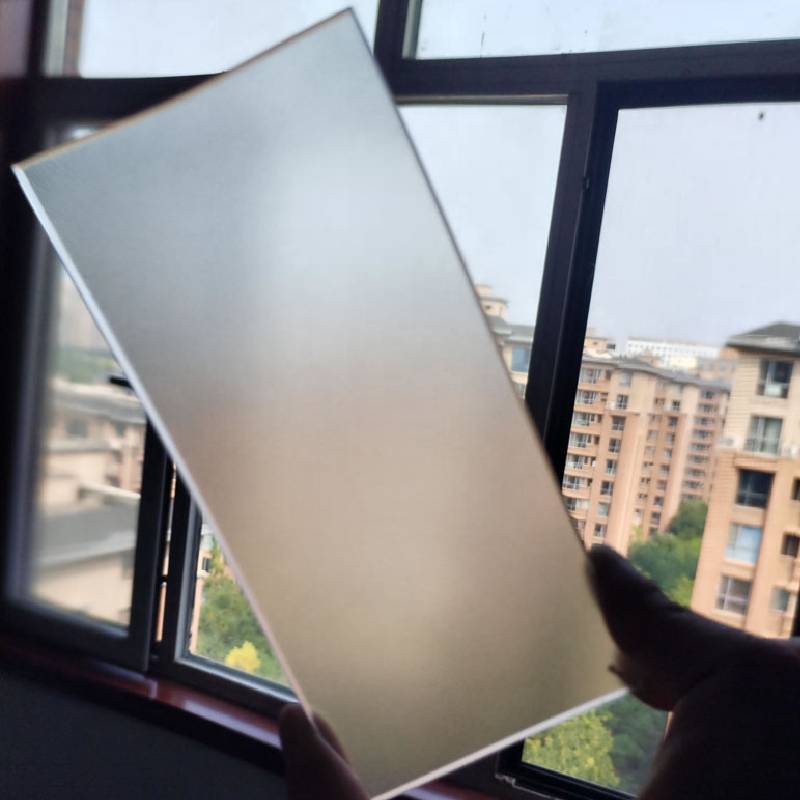Transparent Float Glass Properties, Uses, and Innovations
Transparent float glass is a staple material in modern construction and design, known for its clarity and versatility. Unlike traditional glassmaking methods that can yield imperfections, float glass is produced using a refined technique that ensures a uniform thickness and an impeccable surface finish. This process involves floating molten glass on a bed of molten tin, which results in a smooth, clear, and flat product that is widely used in various applications.
The Manufacturing Process
The creation of transparent float glass begins with the melting of silica sand, soda ash, and limestone at extremely high temperatures. Once the materials have reached a molten state, the mixture is carefully poured onto a bath of molten tin. The glass spreads out horizontally, levelling itself due to gravity. As it cools, it forms a continuous sheet that can be cut into desired dimensions. This method not only enhances the glass's optical properties but also ensures that it is free from bubbles and impurities.
Key Properties
One of the standout features of transparent float glass is its clarity. It transmits light with minimal distortion, making it ideal for windows, mirrors, and display cases. Moreover, float glass boasts exceptional durability and resistance to impact, which is critical in both structural and decorative applications. While it is not inherently safety glass, it can be treated through processes such as tempering or laminating to enhance its strength and make it suitable for more demanding environments.
In addition to its physical properties, transparent float glass has excellent thermal performance. It can be manufactured with varying levels of thermal insulation, helping to improve energy efficiency in buildings. Low-E (low emissivity) coatings can further enhance its energy-saving potential by reflecting infrared light, which keeps buildings cooler in summer and warmer in winter.
Applications
transparent float glass
The uses for transparent float glass are virtually limitless. In the construction industry, it is commonly utilized in facades, windows, and skylights, providing aesthetics and natural lighting while maintaining energy efficiency. In residential settings, homeowners favor float glass for shower enclosures, tabletops, and shelving, benefitting from its clean lines and clarity.
In commercial spaces, transparent float glass plays a crucial role in architecture and interior design. Retail stores use it extensively for storefronts and display cases, allowing customers to easily view products while providing a sense of openness. Additionally, it is often used in office spaces to create partitions and conference room glass walls, contributing to a modern, sleek environment.
Innovations and Future Trends
With advancements in technology, the future of transparent float glass looks promising. Innovations such as smart glass, which can change its transparency or color in response to stimuli (e.g., electric current or sunlight), are gaining traction. This technology not only enhances privacy but can also contribute to energy management within buildings.
Sustainability is another significant trend shaping the future of float glass production. Manufacturers are increasingly focusing on eco-friendly practices, including the use of recycled materials in glass production and energy-efficient manufacturing processes. These initiatives not only reduce the environmental impact but also cater to the growing demand for sustainable building materials.
Conclusion
Transparent float glass remains an essential component in various industries, providing aesthetic and functional benefits. Its unique manufacturing process, exceptional properties, and diverse applications underscore its significance in contemporary design and architecture. As innovations continue to emerge, transparent float glass is poised to play an even more critical role in shaping the future of buildings and interiors, balancing beauty, functionality, and sustainability.
 Afrikaans
Afrikaans  Albanian
Albanian  Amharic
Amharic  Arabic
Arabic  Armenian
Armenian  Azerbaijani
Azerbaijani  Basque
Basque  Belarusian
Belarusian  Bengali
Bengali  Bosnian
Bosnian  Bulgarian
Bulgarian  Catalan
Catalan  Cebuano
Cebuano  Corsican
Corsican  Croatian
Croatian  Czech
Czech  Danish
Danish  Dutch
Dutch  English
English  Esperanto
Esperanto  Estonian
Estonian  Finnish
Finnish  French
French  Frisian
Frisian  Galician
Galician  Georgian
Georgian  German
German  Greek
Greek  Gujarati
Gujarati  Haitian Creole
Haitian Creole  hausa
hausa  hawaiian
hawaiian  Hebrew
Hebrew  Hindi
Hindi  Miao
Miao  Hungarian
Hungarian  Icelandic
Icelandic  igbo
igbo  Indonesian
Indonesian  irish
irish  Italian
Italian  Japanese
Japanese  Javanese
Javanese  Kannada
Kannada  kazakh
kazakh  Khmer
Khmer  Rwandese
Rwandese  Korean
Korean  Kurdish
Kurdish  Kyrgyz
Kyrgyz  Lao
Lao  Latin
Latin  Latvian
Latvian  Lithuanian
Lithuanian  Luxembourgish
Luxembourgish  Macedonian
Macedonian  Malgashi
Malgashi  Malay
Malay  Malayalam
Malayalam  Maltese
Maltese  Maori
Maori  Marathi
Marathi  Mongolian
Mongolian  Myanmar
Myanmar  Nepali
Nepali  Norwegian
Norwegian  Norwegian
Norwegian  Occitan
Occitan  Pashto
Pashto  Persian
Persian  Polish
Polish  Portuguese
Portuguese  Punjabi
Punjabi  Romanian
Romanian  Russian
Russian  Samoan
Samoan  Scottish Gaelic
Scottish Gaelic  Serbian
Serbian  Sesotho
Sesotho  Shona
Shona  Sindhi
Sindhi  Sinhala
Sinhala  Slovak
Slovak  Slovenian
Slovenian  Somali
Somali  Spanish
Spanish  Sundanese
Sundanese  Swahili
Swahili  Swedish
Swedish  Tagalog
Tagalog  Tajik
Tajik  Tamil
Tamil  Tatar
Tatar  Telugu
Telugu  Thai
Thai  Turkish
Turkish  Turkmen
Turkmen  Ukrainian
Ukrainian  Urdu
Urdu  Uighur
Uighur  Uzbek
Uzbek  Vietnamese
Vietnamese  Welsh
Welsh  Bantu
Bantu  Yiddish
Yiddish  Yoruba
Yoruba  Zulu
Zulu 

